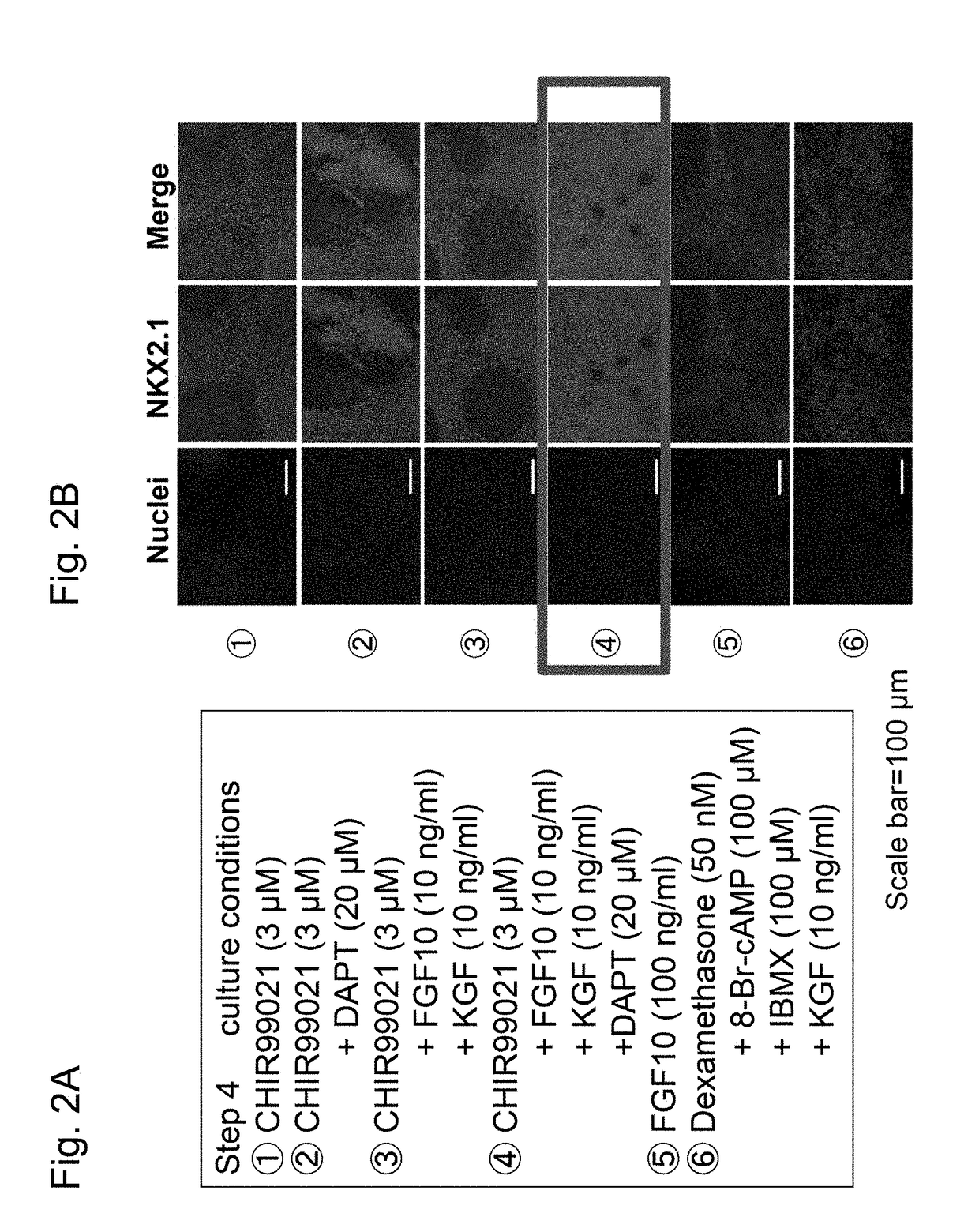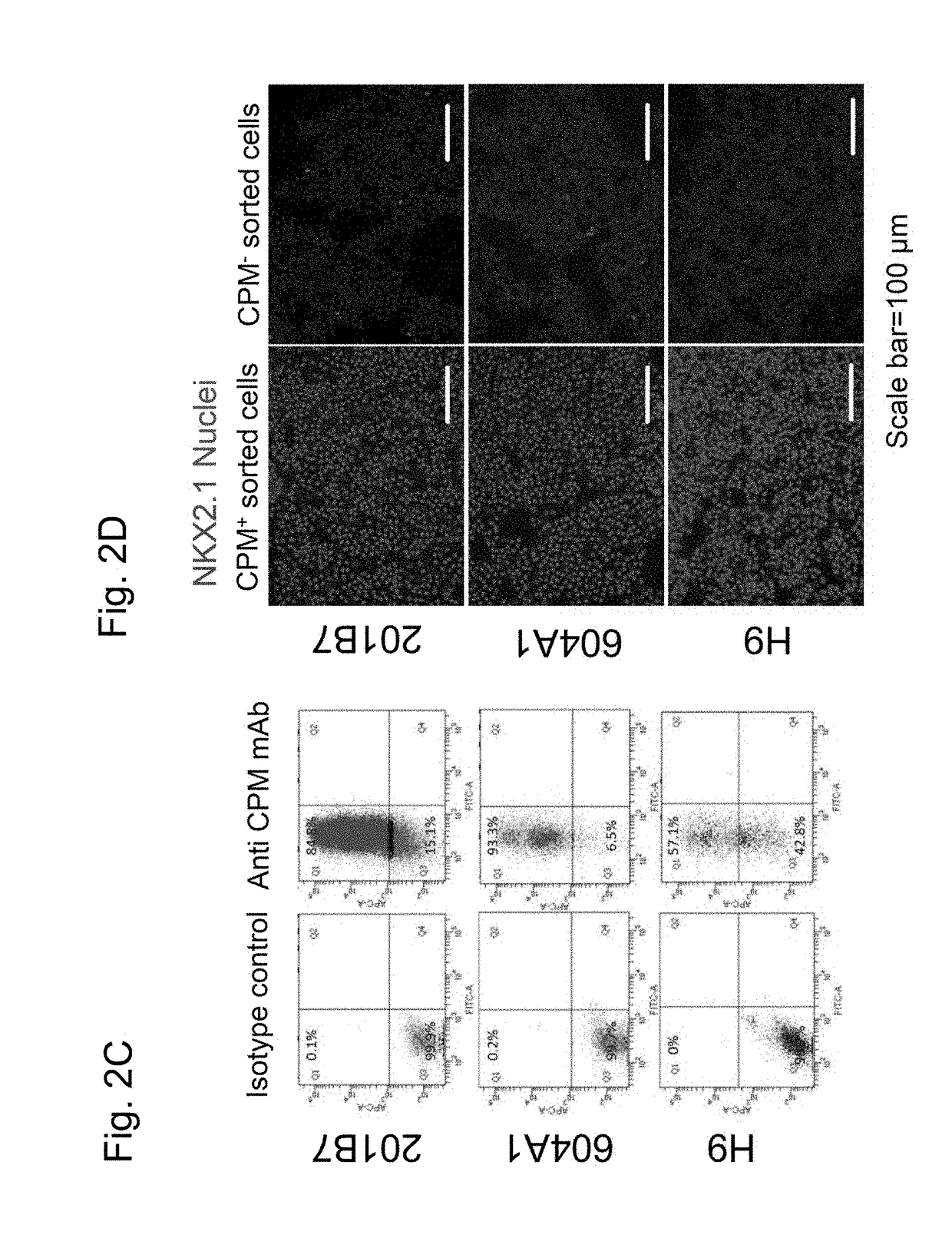Method for inducing differentiation of alveolar epithelial cells
a technology differentiation methods, which is applied in the field of induction of alveolar epithelial cells to achieve high reproducibility and efficiency of human pulmonary alveolar cells
- Summary
- Abstract
- Description
- Claims
- Application Information
AI Technical Summary
Benefits of technology
Problems solved by technology
Method used
Image
Examples
example 1
[Example 1] Method for Inducing Type II Alveolar Epithelial Cells
1. Method for Inducing Type II Alveolar Epithelial Cells
[0167]FIG. 1 shows a method for inducing type II alveolar epithelial cells from ventral anterior foregut cells using human pluripotent stem cells.
1-1. Induction of Differentiation from Human Pluripotent Stem Cells into Ventral Anterior Foregut Cells in Step 1-3
[0168]In accordance with the method described in Gotoh, S. et al., Stem Cell Reports, 2014, Vol. 3, pp. 394-403, human pluripotent stem cells were induced to differentiate into ventral anterior foregut cells.
[0169]Human iPS cells (201B7, 604A1) were provided by Professor Yamanaka at Kyoto University, human ES cells (H9) were provided by WiCell Research Institute, and the cells were cultured in accordance with a conventional technique (Takahashi, K. et al., Cell, 131: 861-872, 2007; Okita, K., et al., Stem Cells, 31: 458-466, 2013; Gotoh, S., et al., Stem Cell Reports, 3: 394-403, 2014).
[0170]In accordance wi...
example 3
[Example 3] Method for Storage of Alveolar Epithelial Progenitor Cells or Type II Alveolar Epithelial Cells
1. Method for Storage of Alveolar Epithelial Progenitor Cells or Type II Alveolar Epithelial Cells
1-1. Isolation of Alveolar Epithelial Progenitor Cells Via MACS and Cryopreservation Thereof
[0217]FIG. 18 shows a method for inducing type II alveolar epithelial cells by cryopreserving human alveolar epithelial progenitor cells on Day 21 (i.e., upon completion of Step 4) and subjecting the resulting cells to three-dimensional coculture.
[0218]On Day 21 after the induction of type II alveolar epithelial cells in Example 1 (i.e., upon completion of Step 4), alveolar epithelial progenitor cells were isolated via magnetic activated cell sorting (MACS) with the use of antibodies reacting with CPM and then cryopreserved. In the same manner as with the isolation of alveolar epithelial progenitor cells via FACS in Example 1, the reaction was allowed to proceed to the treatment with the pri...
PUM
 Login to View More
Login to View More Abstract
Description
Claims
Application Information
 Login to View More
Login to View More - R&D
- Intellectual Property
- Life Sciences
- Materials
- Tech Scout
- Unparalleled Data Quality
- Higher Quality Content
- 60% Fewer Hallucinations
Browse by: Latest US Patents, China's latest patents, Technical Efficacy Thesaurus, Application Domain, Technology Topic, Popular Technical Reports.
© 2025 PatSnap. All rights reserved.Legal|Privacy policy|Modern Slavery Act Transparency Statement|Sitemap|About US| Contact US: help@patsnap.com



